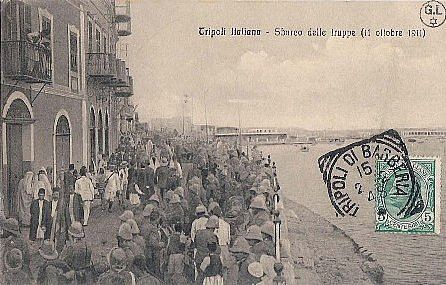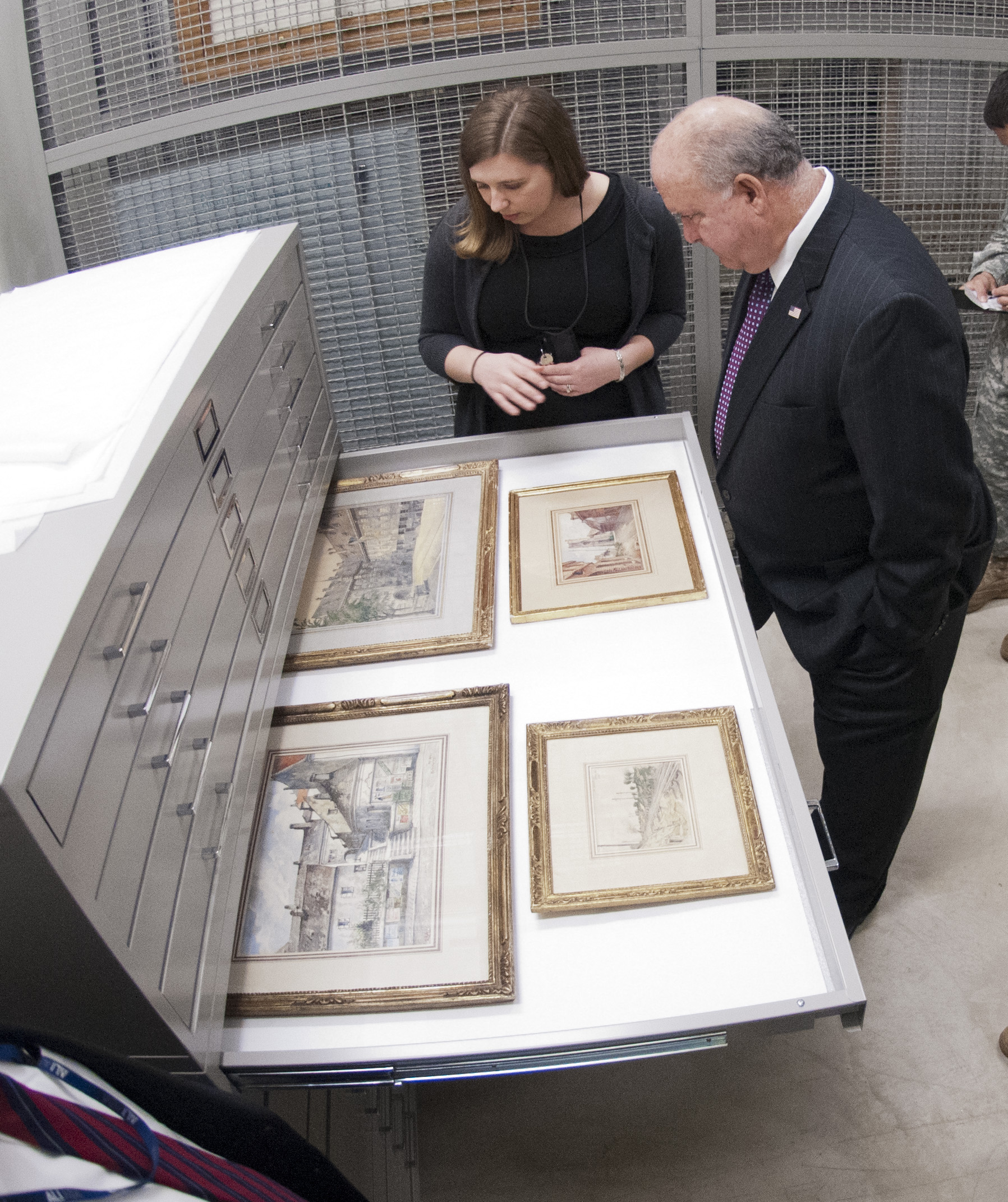|
Egypt–Libya Campaign
The Egypt–Libya Campaign is the name used by the United States military for the US contribution to the Allied Western Desert Campaign, during World War II. From 1942, U.S. forces assisted the British Empire in fighting Axis forces in Egypt and Libya. The U.S. Egypt–Libya Campaign was part of what the US military called the Mediterranean Theater of Operations. Air Force Operations In June 1942 the United States Army Forces in the Middle East (USAFIME) was created to replace both the North African Mission in Cairo and the Iranian Mission in the Persian Corridor. On June 16 the War Department named Army General Russell L. Maxwell as the first commander of USAFIME. An Army general, rather than an Army Air Corps general, was named because at the time it was still expected that there would be a large U.S. Army land force contribution to the campaign. The next day the War Department informed Maxwell that the Halverson Detachment would remain in Egypt as a part of USAFIME. In antic ... [...More Info...] [...Related Items...] OR: [Wikipedia] [Google] [Baidu] |
United States Military
The United States Armed Forces are the Military, military forces of the United States. U.S. United States Code, federal law names six armed forces: the United States Army, Army, United States Marine Corps, Marine Corps, United States Navy, Navy, United States Air Force, Air Force, United States Space Force, Space Force, and the United States Coast Guard, Coast Guard. Since 1949, all of the armed forces, except the Coast Guard, have been permanently part of the United States Department of Defense. They form six of the eight uniformed services of the United States. Each of the different military services is assigned a role and domain. The Army conducts land operations. The Navy and Marine Corps conduct maritime operations, the Marine Corps specializing in amphibious and maritime littoral operations primarily for supporting the Navy. The Air Force conducts air operations. The Space Force conducts space operations. The Coast Guard is unique in that it specializes in maritime opera ... [...More Info...] [...Related Items...] OR: [Wikipedia] [Google] [Baidu] |
Tobruk
Tobruk ( ; ; ) is a port city on Libya's eastern Mediterranean coast, near the border with Egypt. It is the capital of the Butnan District (formerly Tobruk District) and has a population of 120,000 (2011 est.)."Tobruk" (history), ''Encyclopædia Britannica'', 2006, Britannica Concise Encyclopedia, ''Concise.Britannica.com'BC-Tobruk. Tobruk was the site of an ancient Greek colony and, later, of a Roman fortress guarding the frontier of Cyrenaica. Over the centuries, Tobruk also served as a waystation along the coastal caravan route. By 1911, Tobruk had become an Italian military post. During World War II, Allied forces, mainly the Australian 6th Division, took Tobruk on 22 January 1941. The Australian 9th Division (" The Rats of Tobruk") pulled back to Tobruk to avoid encirclement after actions at Er Regima and Mechili and reached Tobruk on 9 April 1941. There prolonged fighting followed, against a siege by German and Italian forces. Although the siege was lifted ... [...More Info...] [...Related Items...] OR: [Wikipedia] [Google] [Baidu] |
Libya In World War II
Libya (; ) was a colony of Fascist Italy (1922–1943), Italy located in North Africa, in what is now modern Libya, between 1934 and 1943. It was formed from the unification of the colonies of Italian Cyrenaica, Cyrenaica and Italian Tripolitania, Tripolitania, which had been Italian colonial empire, Italian possessions since 1911. From 1911 until the establishment of a unified colony in 1934, the territory of the two colonies was sometimes referred to as "Italian Libya" or Italian North Africa (''Africa Settentrionale Italiana'', or ASI). Both names were also used after the unification, with Italian Libya becoming the official name of the newly combined colony. Through its history, various infrastructure projects, most notably roads, Rail transport in Libya, railways and villages were set up, as well as archeology. It had a population of around 150,000 Italian settlers in Libya, Italians. The Italian colonies of Tripolitania and Cyrenaica were taken by Italy from the Ottoman E ... [...More Info...] [...Related Items...] OR: [Wikipedia] [Google] [Baidu] |
Egypt In World War II
Egypt was a major battlefield in the North African campaign during the Second World War, being the location of the First and Second Battles of El Alamein. Legally an independent kingdom since 1922, and an equal sovereign power in the condominium of Anglo-Egyptian Sudan, in reality Egypt was heavily under the coercive influence of the United Kingdom, a state of affairs that had persisted since the United Kingdom intervened militarily in the Orabi Revolt in favour of Egypt's Khedive, Tawfik Pasha, in 1882, subsequently occupying the country. The continuing British dominance of Egyptian affairs, including British efforts to exclude Egypt from the governance of Sudan, provoked fierce Egyptian nationalist opposition to the United Kingdom. Consequently, despite playing host to thousands of British troops following the outbreak of the conflict, as it was treaty-bound to do, Egypt remained formally neutral during the war, only declaring war on the Axis powers in the spring of 1945. ... [...More Info...] [...Related Items...] OR: [Wikipedia] [Google] [Baidu] |
United States Army Center Of Military History
The United States Army Center of Military History (CMH) is a directorate within the United States Army Training and Doctrine Command. The Institute of Heraldry remains within the Office of the Administrative Assistant to the Secretary of the Army. The center is responsible for the appropriate use of military history, history and military records throughout the United States Army. Traditionally, this mission has meant recording the official history of the army in both peace and war, while advising the army staff on historical matters. CMH is the flagship organization leading the Army Historical Program. CMH is also in charge of the National Museum of the United States Army, at Fort Belvoir, Fort Belvoir, Virginia. Mission The center traces its lineage back to historians under the Secretary of War who compiled the Official Records of the American Civil War, ''Official Records of the Rebellion'', an extensive history of the American Civil War begun in 1874. A similar work on World ... [...More Info...] [...Related Items...] OR: [Wikipedia] [Google] [Baidu] |
European Theater Of Operations
The European Theater of Operations, United States Army (ETOUSA) was a Theater (warfare), theater of Operations responsible for directing United States Army operations throughout the European theatre of World War II, from 1942 to 1945. It commanded Army Ground Forces (AGF), United States Army Air Forces (USAAF), and Army Service Forces (ASF) operations north of Italy and the Mediterranean coast. It was bordered to the south by the North African Theater of Operations, United States Army (NATOUSA), which later became the Mediterranean Theater of Operations, United States Army (MTOUSA). The term ''theater of operations'' was defined in the US Army field manuals as ''the land and sea areas to be invaded or defended, including areas necessary for administrative activities incident to the military operations''. In accordance with the experience of World War I, it was usually conceived of as a large land mass over which continuous operations would take place and was divided into two chie ... [...More Info...] [...Related Items...] OR: [Wikipedia] [Google] [Baidu] |
Ninth Air Force
The Ninth Air Force (Air Forces Central) is a Numbered Air Force of the United States Air Force headquartered at Shaw Air Force Base, South Carolina. It is the Air Force Service Component of United States Central Command (USCENTCOM), a joint Department of Defense combatant command responsible for U.S. security interests in 27 nations that stretch from the Horn of Africa through the Persian Gulf region, into Central Asia. Activated as 9th Air Force on 8 April 1942, the command fought in World War II both in the Western Desert Campaign in Egypt and Libya and as the tactical fighter component of the United States Strategic Air Forces in Europe, engaging enemy forces in France, the Low Countries and in Nazi Germany. During the Cold War, it was one of two Numbered Air Forces of Tactical Air Command. Co-designated as United States Central Command Air Forces (CENTAF) on 1 January 1983, on 2009 as part of a complicated transfer of lineage, the lineage and history of the Ninth Air Fo ... [...More Info...] [...Related Items...] OR: [Wikipedia] [Google] [Baidu] |
Frank M
Frank, FRANK, or Franks may refer to: People * Frank (given name) * Frank (surname) * Franks (surname) * Franks, a Germanic people in late Roman times * Franks, a term in the Muslim world for all western Europeans, particularly during the Crusades Currency * Liechtenstein franc or frank, the currency of Liechtenstein since 1920 * Swiss franc or frank, the currency of Switzerland since 1850 * Westphalian frank, currency of the Kingdom of Westphalia between 1808 and 1813 * The currencies of the German-speaking cantons of Switzerland (1803–1814): ** Appenzell frank ** Aargau frank ** Basel frank ** Berne frank ** Fribourg frank ** Glarus frank ** Graubünden frank ** Luzern frank ** Schaffhausen frank ** Schwyz frank ** Solothurn frank ** St. Gallen frank ** Thurgau frank ** Unterwalden frank ** Uri frank ** Zürich frank Places * Frank, Alberta, Canada, an urban community, formerly a village * Franks, Illinois, United States, an unincorporated community * Fran ... [...More Info...] [...Related Items...] OR: [Wikipedia] [Google] [Baidu] |
IX Fighter Command
The IX Fighter Command was a United States Army Air Forces formation. Its last assignment was with the Ninth Air Force, based at Erlangen, Germany, where it was inactivated on 16 November 1945. IX Fighter Command was the primary tactical fighter air arm of Ninth Air Force in the Western Desert Campaign in North Africa during 1942–1943. Transferred to England, it became the dominant tactical air force over the skies of Western Europe during the 1944 Operation Overlord, Battle of Normandy and the Western Allied invasion of Germany in 1945. After its inactivation, the majority of its (along with Twelfth Air Force) units were incorporated into the postwar United States Air Force Tactical Air Command. History North Africa In Egypt during January 1943, IX Fighter Command became the control organization for Ninth Air Force fighter units assigned to the Western Desert Campaign (Libya and Tunisia). Although wings were officially subordinate to the command, combat groups were attac ... [...More Info...] [...Related Items...] OR: [Wikipedia] [Google] [Baidu] |





